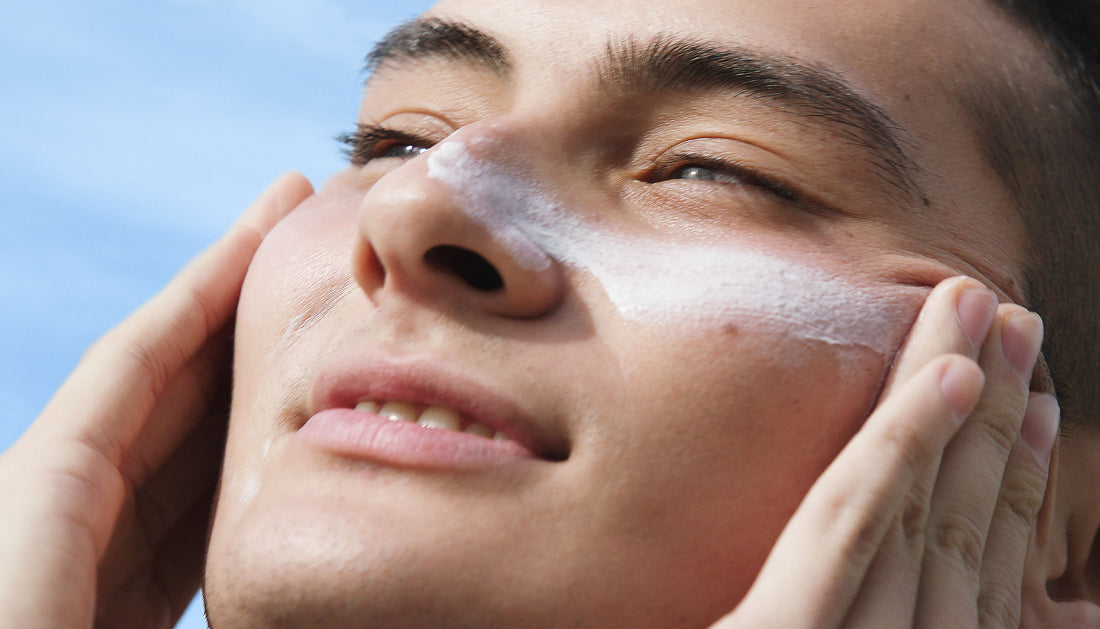Healthy, smooth, even-toned skin – and good health – are the trade-offs for golden tans and too much time in the sun. Surprisingly, many people who think they are protecting themselves are following outdated, inaccurate advice that is jeopardising their long-term skin health. Let's go over some of the things you should know.
1. Not all sunscreens protect against both UVA (ageing) and UVB (burning) rays.
Applying any old SPF product won’t keep skin safe from both types of harmful UV rays. Look closely at the labels and ingredients of the chemical or physical sunscreen you buy.
The SPF (Sun Protection Factor) number indicates how long it takes for skin to redden from UVB rays. For example, SPF 15 means it takes 15 times longer. UVA rays (the same ones emitted by tanning booths) penetrate the skin more deeply, accelerate the signs of skin ageing, and generate skin cancer.
Broad Spectrum SPF contains a combination of ingredients known to protect skin against both types of UV rays. Chemical sunscreens like Avobenzone absorb ultraviolet (UV) radiation, while physical sunscreens (Titanium Dioxide, Zinc Oxide) reflect or scatter it.
2. Chemical or physical sunscreen? It's a matter of preference.
Chemical sunscreens absorb into the skin and are usually more popular because they feel lighter, look less noticeable, and are more water and sweat resistant. They use active ingredients like Avobenzone and Helioplex. Try a chemical sunscreen like Prisma Protect SPF 30, a light-activated multitasking moisturiser that provides broad spectrum defense while preventing future signs of skin damage.
Physical sunscreens, or mineral sunscreens, sit on the surface of the skin. They can feel heavier and look more noticeable, but they provide added coverage. Look for active ingredients like Zinc Oxide and Titanium Dioxide to identify them. Porescreen SPF 40 is a multitasking physical sunscreen with SPF 40 protection that supports healthy-looking pores and minimises their appearance with a blurring, primer-like effect, while enhancing skin tone with a hint of tint.
3. A base tan does not protect you from the sun.
There is no such thing as a safe tan. By definition, a suntan is your skin's defense to being harmed by UV exposure. Your cells respond to the affront by producing more melanin (pigment), and your skin darkens as a result. There is nothing healthy or preventive to be gained from trying to acquire a base tan.
4. Sunscreen isn't just for the summer.
Sun damage doesn’t just happen during the summer months or while at the beach. Photo damage or UV exposure (which causes ageing) can occur from exposure to daylight through clouds, rain, glass and even fluorescent indoor lighting. Roughly 90 percent of photo ageing is preventable by wearing SPF daily.
Dynamic Skin Recovery SPF 50 is a 3-in-1 daily moisturiser that visibly firms, smooths, and protects skin. It’s clinically proven to immediately hydrate skin and reduce the look of wrinkles.* And, while daily sun care is an obvious must, it also shouldn't come at the expense of your skin care benefits! Because all Dermalogica sunscreens go beyond just defense to deliver these benefits, finding the right SPF formula for your skin and routine can level up your entire skin care regimen.
*Independent clinical test, 33 subjects, 1 application a day for 8 weeks.5. You're probably not using enough sunscreen.
Creams and lotions tend to deliver better protection than spray formulations, which most people don't apply enough of to get adequate coverage. The American Academy of Dermatology recommends a "liberal use" of SPF 30 (picture a shot glass full of lotion) for the body. For the face, apply one teaspoon of sunscreen. Reapply every two hours (or after swimming or exercising).
Find the right sun protection for your skin by browsing our range of sunscreens here or chat with our skin therapists online for personalised advice today.




